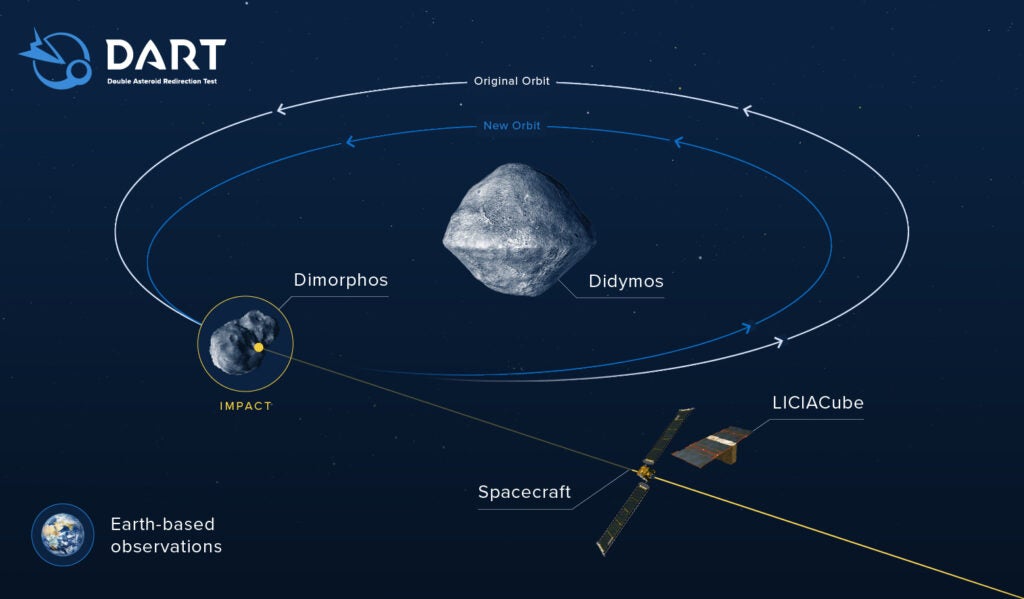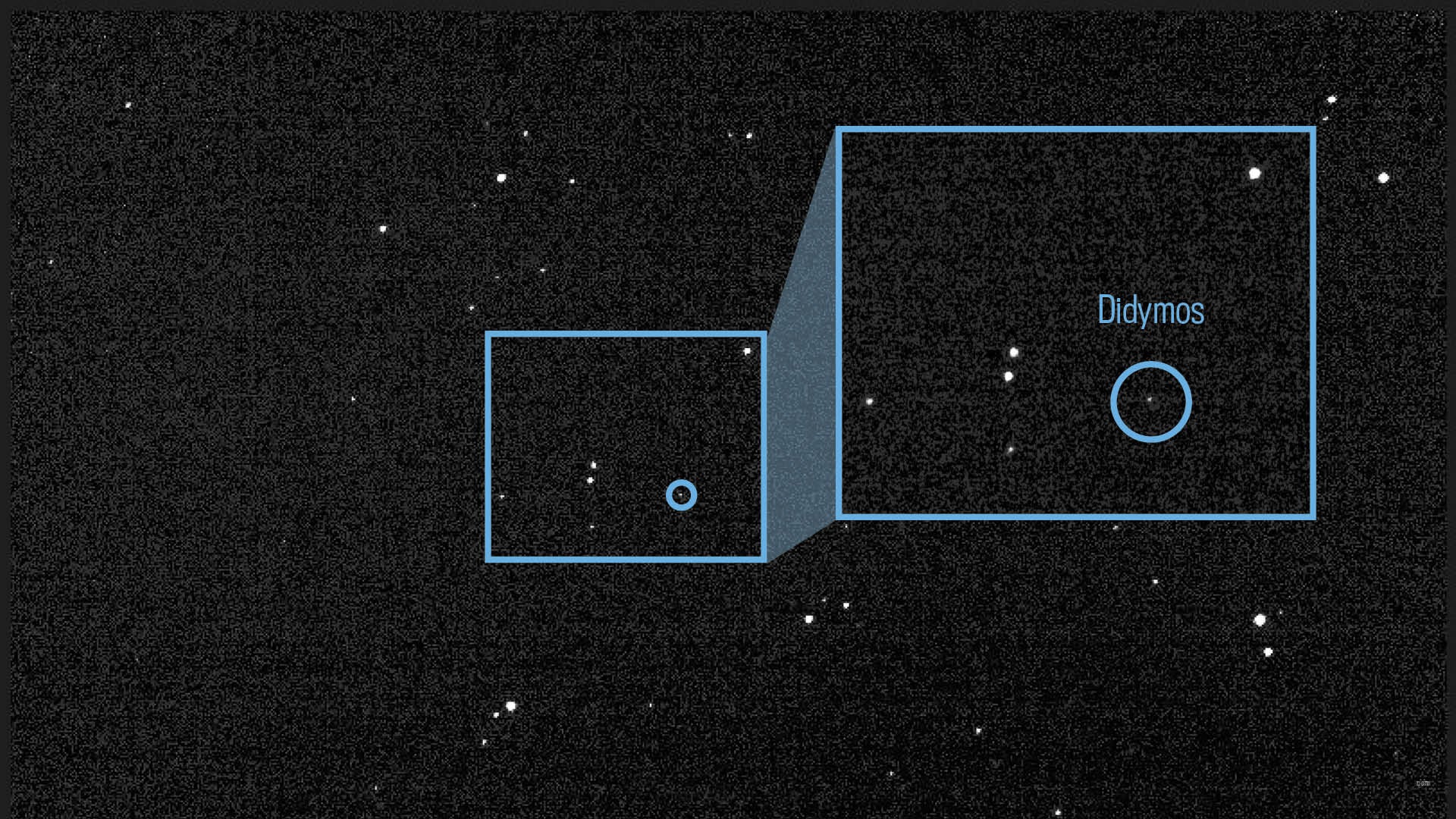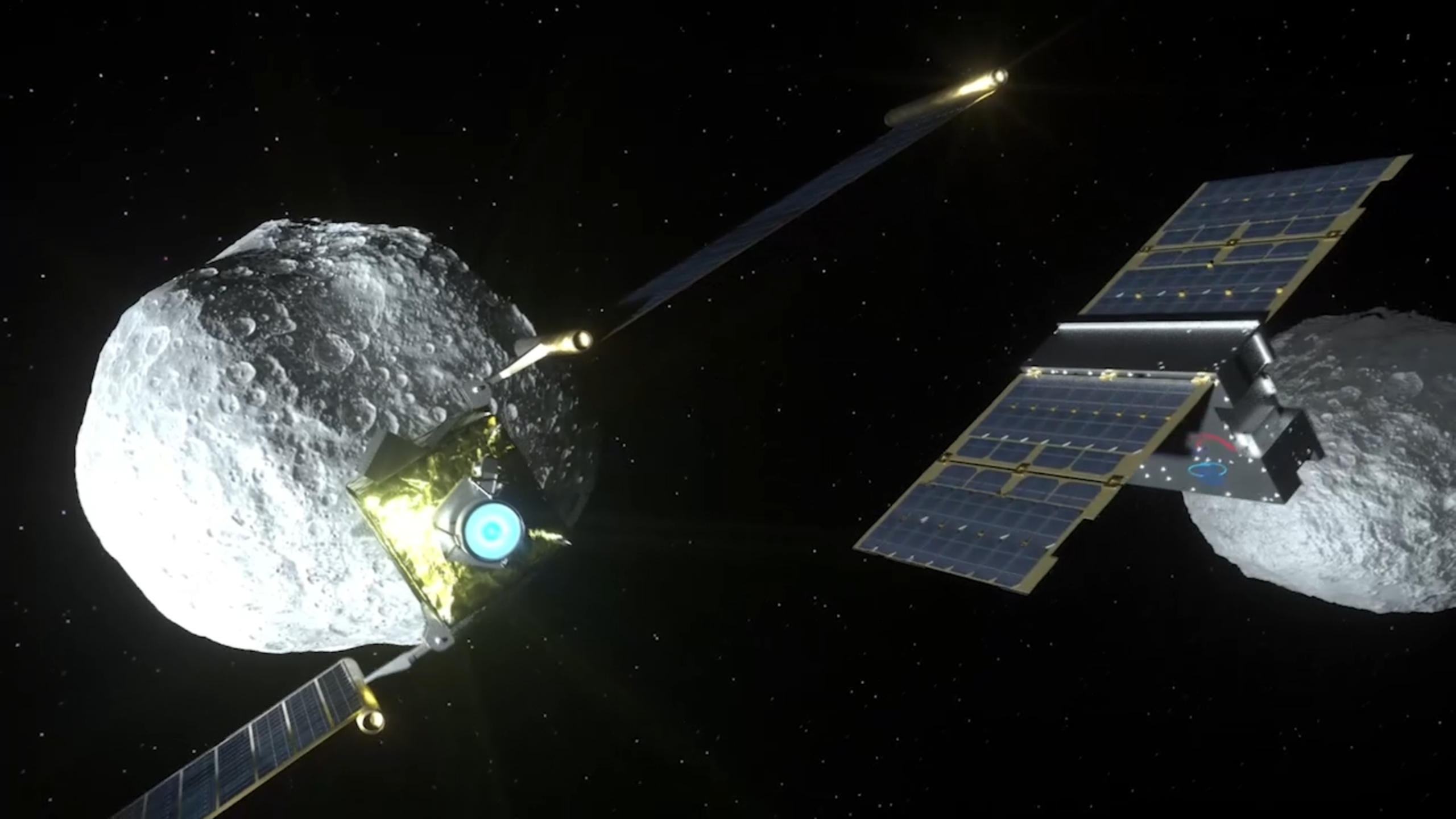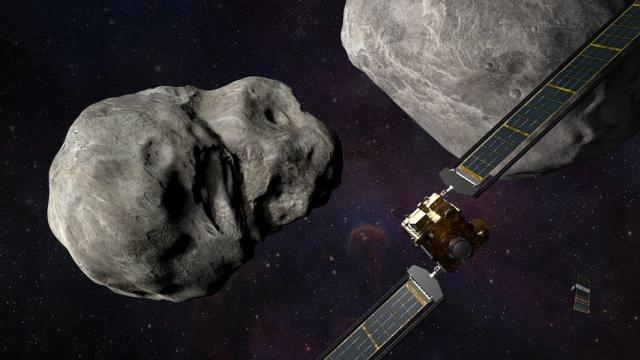A NASA spacecraft called DART is set to deliberately crash into a small asteroid as part of a planetary defence test. While this space rock isn’t of concern, what we learn from the mission could help us if ever an asteroid does head our way.
NASA keeps tabs on 28,000 nearby asteroids, none of which currently pose a threat to Earth. That said, astronomers detect around 3,000 asteroids each year, so it’s possible that we’ll eventually find one with our name on it. Thankfully, the upcoming DART test to deflect a non-threatening asteroid could mean we’re not just sitting ducks.
The recent Netflix film Don’t Look Up served as a metaphor for climate change denialism, but it also reminded us that incoming asteroids could seriously mess us up. Just ask the dinosaurs. During the film, the president announces a mission to destroy the asteroid with nuclear weapons, which is typical of the Hollywood approach to such matters. In the real world, scientists have shown that nukes might actually work to disintegrate threatening asteroids, but a small portion of debris could still smash into our planet. Instead of this bare-knuckle boxing approach, NASA is envisioning something more elegant — something a bit more Jiu-Jitsu. Instead of smashing an asteroid to pieces, NASA’s Planetary Defence Coordination Office would try to alter its orbital trajectory and steer it away from Earth’s path.
What is the DART mission?
NASA’s $US308 ($428) million Double Asteroid Redirection Test, or DART, is a mission to test this theory. On September 26, a 624 kg probe will attempt to smash into a tiny asteroid at speeds approaching 24,140 km per hour. The tiny asteroid, Dimorphos, poses no threat to Earth, but by altering its orbital trajectory, NASA will have successfully tested a viable strategy for shoving dangerous asteroids from harm’s way using kinetic impactors. Dimorphos orbits a slightly larger asteroid called Didymos; the mission aims to alter that orbit.

DART is NASA’s first planetary defence test mission, designed and built by teams at Johns Hopkins Applied Physics Laboratory (APL). NASA’s Planetary Defence Coordination Office tasked APL with the job of managing the project, but significant contributors include NASA Goddard Space Flight Centre, Johnson Space Centre, the Jet Propulsion Laboratory, the European Space Agency, and the Italian Space Agency, among many other institutions.
When will DART smash into the asteroid?
DART launched to space aboard a SpaceX Falcon 9 on November 24, 2021. The spacecraft is nearing the end of its 11-month journey, having travelled 11 million kilometres to reach Didymos. DART is expected to reach its target on September 27 at 9:14 a.m. AEST, at which time it will smash into Dimorphos, thereby destroying itself but potentially nudging the asteroid’s trajectory.
Three course correction manoeuvres in the final three weeks of the journey are required to keep DART on course. The last of these manoeuvres will happen approximately 24 hours prior to the impact, during which time the navigation team will know the position of Dimorphos to an accuracy of 2 kilometres, according to NASA. From that point on, DART’s autonomous navigation system, called SMART NAV, will steer it toward its target. SMART NAV is designed to differentiate the 807.72 m-wide Didymos from the 160.02 m-wide Dimorphos, preventing a potential mix-up at the scene.
Will we get to see the impact?
Yes! Multiple eyes, both in space and on Earth, will be closely monitoring the experiment.
DART will provide a POV perspective of its demise by virtue of its lone scientific instrument, the Didymos Reconnaissance and Asteroid Camera for Optical navigation. Known as DRACO for short, this camera, which also feeds SMART NAV with data, will capture images of the binary pair on DART’s approach. On July 27, DRACO captured a view of the pair at a distance of 32 million kilometres.

We’ll also have front-row seats to the event by virtue of the Light Italian Cubesat for Imaging Asteroids, or LICIACube. Built by the Italian Space Agency, LICIACube will separate from DART 10 days prior to the impact. Its two onboard cameras, named LUKE and LEIA, will acquire high-resolution colour images from a safe distance.

Back on Earth, NASA’s ground-based telescopes and radar will closely monitor the event. ESA will use its Estrack network, which includes dish antennas in Argentina and Australia, to follow the experiment at resolutions reaching several hundred meters.
The upcoming HERA mission, a joint project between NASA and ESA, will launch a probe in 2024 to study the longer term effects of the impact and possibly catch a glimpse of Dimorphos’s new crater. HERA will carry two cubesats along with it for the ride. Scientists will want to measure any changes to the moonlet’s rotation and trajectory in the months and years following the the impact.
How do I watch the DART mission?
NASA TV will begin its live coverage of the DART experiment on September 27 at 8:00 a.m. AEST. The impact is expected to occur at 9:14 a.m AEST. Live coverage will stream at NASA TV, NASA YouTube, NASA Facebook, and NASA Twitter.
The Virtual Telescope Project will also provide live coverage, during which time robotic ground-based telescopes will attempt to make observations of the impact. Gizmodo will provide a more detailed guide on how to watch the DART test in the days leading up to the event.
What is NASA hoping to achieve with the DART test?
The space agency has listed four main objectives: successfully demonstrate a kinetic impact with Dimorphos, change its orbital trajectory, use ground-based telescopes to measure changes to Dimorphos’s orbital period, and measure the physical effects of the impact, such as debris spewing out from the asteroid.
Ultimately, however, it’s the test of potential planetary defence strategy. “DART’s target asteroid is not a threat to Earth but is the perfect testing ground to see if this method of asteroid deflection — known as the kinetic impactor technique — would be a viable way to protect our planet if an asteroid on a collision course with Earth were discovered in the future,” according to NASA.
Could the DART test put Earth in danger?
Neither Didymos or Dimorphos currently pose a threat to Earth, nor will they pose a risk after DART. NASA chose this system because it’s representative of similar binary pairs scattered throughout the solar system, and because it was deemed ideal for such a test. As NASA says, the impact “will change the speed of the moonlet in its orbit around the main body by a fraction of one per cent, but this will change the orbital period of the moonlet by several minutes — enough to be observed and measured using telescopes on Earth.”
And to be clear, Earth is not currently in any imminent danger of being struck by a large asteroid, at least not for the next 100 years. The concern has to do with potentially hazardous NEOs that suddenly appear without warning. In such cases, we’ll want to be prepared and have sound strategies for meeting such risks. DART, should it succeed, will set us in the right direction.
Related: The 2021 asteroid impact simulation ended in disaster.
